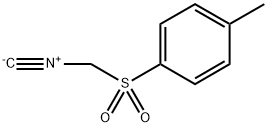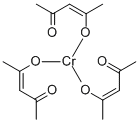Toluene diisocyanate
Synonym(s):4-Methyl-m-phenylene diisocyanate, TDI;Toluylene diisocyanate
- CAS NO.:26471-62-5
- Empirical Formula: C9H6N2O2
- Molecular Weight: 174.15614
- MDL number: MFCD01778251
- EINECS: 247-722-4
- SAFETY DATA SHEET (SDS)
- Update Date: 2025-12-10 16:23:50

What is Toluene diisocyanate?
Description
Toluene diisocyanate (TDI) is an aromatic diisocyanate that is a clear, pale yellow liquid with a sharp, pungent odor, which is insoluble in water and miscible with most common organic solvents. TDI (CAS No. 26471-62-5) consists of two isomers: toluene-2,4-diisocyanate (2,4-TDI) (CAS No. 584- 84-9) and toluene-2,6-diisocyanate (2,6-TDI) (CAS No. 91- 08-7), which is commercially produced in different ratios. The most common ratio is 80% 2,4-TDI/20% 2,6 TDI. TDI is widely used and accounted for 34% of the global isocyanate market in 2000.
Chemical properties
Toluene diisocyanate is a colorless, yellow, or dark liquid or solid. It has a sweet, fruity, pungent odor. Toluene diisocyanate (technical, 26471-62-5) is an 80: 20 mixture of 2,4-and 2,6-isomers. A solid above 71/F/22℃. The Odor Threshold is 0.4-2.14 ppm.
The Uses of Toluene diisocyanate
Toluene diisocyanates are used primarily to manufacture flexible polyurethane foams for use in furniture, bedding, and automotive and airline seats. Other, smaller uses are for polyurethane elastomers (for automobile bumper covers, industrial rollers, sport soles and boots, and mechanical goods) and coatings (for automotive refinishing, wood finishes, and high-performance anti-corrosion coatings)(ICIS 2009). Toluene diisocyanate–based rigid polyurethane foam is used in household refrigerators and for residential sheathing or commercial roofing in board or laminate form (IARC 1986). “Pour-inplace” or “spray-in” rigid foam is used as insulation for truck trailers, railroad freight cars, and cargo containers. Polyurethane-modified alkyds contain approximately 6% to 7% isocyanate, mostly toluene diisocyanates, and are used as coating materials, such as floor finishes, wood finishes, and paints. Moisture-curing coatings are used as wood and concrete sealants and floor finishes. Aircraft, truck, and passenger-car coatings often are composed of toluene diisocyanate prepolymer systems. Castable urethane elastomers are used in applications requiring strength, flexibility, and shock absorption, and are resistant to oil, solvents, and ultraviolet radiation. They are used in adhesive and sealant compounds and in automobile parts, shoe soles,rollerskate wheels, pond liners, and blood bags. They are also used inoil fields and mines. Certain elastomer products are produced from the pure 2,4 isomer rather than the 80:20 mixture.
The Uses of Toluene diisocyanate
The functional groups in TDI react with hydroxyl groups to form urethane linkages, which are used in the manufacture of flexible polyurethane foams for use in furniture, bedding, and automotive and commercial transportation seating. Other uses include polyurethane elastomers used in automobile bumper covers, industrial rollers, sporting footwear, as well as mechanical goods and coatings (metal, wood, and highperformance anticorrosion coatings). TDI-based rigid polyurethane foam is used in household refrigerators and for residential construction such as sheathing and commercial roofing. TDI spray-in rigid foam is used as insulation for truck trailers, railroad freight cars, and overseas cargo containers. Moisture-curing TDI coatings are used as wood and concrete sealants and floor finishes.
General Description
A clear colorless to pale yellow liquid with a pungent odor. Denser than water. Burns, but may be difficult to ignite. Vapors are heavier than air. Vapors irritate the respiratory system. Toxic under prolonged exposure to vapor in low concentrations or short exposure to high concentrations of vapor. Carcinogenic. Produces toxic oxides of nitrogen during combustion. Used to make polyurethane foams and paints.
Air & Water Reactions
Reaction with water liberates carbon dioxide.
Reactivity Profile
TOLUENE DIISOCYANATE is explosive in the form of vapor-air mixture when exposed to heat, flame or sparks. Potentially violent polymerization reaction with strong bases or acyl chlorides. Reaction with aniline may generate enough heat to ignite unreacted portion and surrounding materials. Reaction with water liberates carbon dioxide. Potential explosion if stored in polyethylene containers due to absorption of water through the plastic. Emits toxic fumes of oxides of nitrogen when heated to decomposition[Lewis, 3rd ed., 1993, p. 1251].
Fire Hazard
TOLUENE DIISOCYANATE is combustible.
Flammability and Explosibility
Non flammable
Contact allergens
Toluene diisocyanate is a mixture of 2,4-TDI and 2,6- TDI. It is used in the manufacture of various polyurethane products: elastic and rigid foams, paints, lacquers, adhesives, binding agents, synthetics rubbers, and elastomeric fibers.
Safety Profile
Confirmed carcinogen with experimental carcinogenic and neoplastigenic data. Poison by inhalation. Moderately toxic by ingestion. Severe skin irritant. Human mutation data reported. Capable of producing severe dermatitis and bronchal spasm. A common air contaminant. A flammable liquid when exposed to heat or flame. Explosive in the form of vapor when exposed to heat or flame. To fight fire, use dry chemical, COa. Potentially violent polymerization reaction with bases or acyl chlorides. Reaction with water releases carbon dioxide. Storage in polyethylene containers is hazardous due to absorption of water through the plastic. When heated to decomposition it emits highly toxic fumes of NOx. See also IS0CYANATES .
Potential Exposure
Toluene diisocyanate is used in the production of polyurethane flexible foams, coatings, paints, and elastomers. It is more widely used than MDI (diphenylmethane diisocyanate). Polyurethanes are formed by the reaction of isocyanates with polyhydroxy compounds. Since the reaction proceeds rapidly at room temperature, the reactants must be mixed in pots or spray guns just before use. These resins can be produced with various physical properties, for example, hard, flexible, semirigid foams; and have found many uses, for example, upholstery padding; thermal insulation; molds, surface coatings; shoe inner soles; and in rubbers, adhesives, paints, and textile finishes. Because of TDI’s high volatility, exposure can occur in all phases of its manufacture and use. MDI has a much lower volatility, and problems generally arise only in spray applications.
Carcinogenicity
Toluene diisocyanates are reasonably anticipated to be human carcinogens based on sufficient evidence of carcinogenicity from studies in experimental animals.
Environmental Fate
TDI is a synthetic organic chemical. It is a natural derivative
of primary amines with the general formula R–N]C]O
which does not occur naturally in the environment. At room
temperature, it can be a liquid or crystal. It is miscible with
alcohol, diglycol, monoethyl ether, ether, acetone, carbon
tetrachloride, benzene, chlorobenzene, kerosene, and olive
oil; however, it may react violently with alcohol, water, acid,
bases, and strong alkaline materials and tertiary amines and
generate enough heat to self-ignite and release toxic
combustion products. TDI reacts with water and most acids
producing unstable carbonic acids, which subsequently
decarboxylate yielding relatively chemically inert and
insoluble polymeric urea. Studies indicate that hydrolysis is
the dominant process in determining the overall environmental
fate, transport, and bioaccumulation potential
of TDI.
Although their rapid hydrolysis in surface water reduces
persistence and bioaccumulation in the environment, diisocyanates
may be stable long enough to be transported some
distances through the atmosphere and inhaled. Since the
hydrolysis products formed are irritants, there is a potential for
inhalation exposure. The degree stability is a function of
humidity. It is expected that TDI does not bioaccumulate
because the tendency to hydrolyze rapidly makes uptake and accumulation very unlikely. The bioconcentration factor ranges
from 151 to 1183 and the bioaccumulation factor is 380. These
values indicate that TDI has a low potential for bioaccumulation
in aquatic organisms. TDI is expected to hydrolyze
rapidly into its transformation products, making TDI
generally unavailable to aquatic organisms. The highly reactive
properties of diisocyanates are likely to be metabolized/
degraded at rates significant enough to counter any potential
for bioaccumulation or biomagnification. It is anticipated that
TDI released to water will primarily form inert polyureas,
which have the potential to be deposited to sediment, forming
an inert component of the sediment strata. While these polyureas
are persistent, studies have indicated that they pose
virtually no potential for adverse impacts on the aquatic
environment.
Shipping
UN2078 Toluene diisocyanate, Hazard Class: 6.1; Labels: 6.1-Poisonous materials.
Toxicity evaluation
TDI is a highly reactive compound. The toxicological properties
of isocyanates are attributed to the –N=C=O group. It is
thought to react vigorously and exothermically with water
forming an unstable carbamic acid that dissociates to form
a primary amine with liberation of CO2. Hence, the primary
amine will react further generating a urea derivative. TDI also
reacts readily with all organic compounds resulting in polymerization.
Such reactions denature proteins, form abnormal
cross-linkages, and generally disorganize the protein resulting
in alteration of its normal function. This reactivity with
proteins can account for its potency as a sensitizing agent. Thus,
more than one reaction may occur in a system at a given time.
The toxic effects of TDI can be attributed to two possible toxic
actions:
1. A primary irritant action on the mucous membranes of the
eyes, and the gastrointestinal and respiratory tracts, and
2. Bronchospasm due to either a pharmacological or an
immunological reaction.
This pharmacological reaction can be attributed to altered
β-adrenergic function or the blockade of the S-adrenergic
system by diminishing the formation of c-AMP after catecholamine
stimulation or perhaps to local histamine release. TDI
may also react with naturally occurring proteins or polysaccharides
to form immunohapten complexes.
Incompatibilities
May form explosive mixture with air. Isocyanates are highly flammable and reactive with many compounds, even with themselves. Incompatible with oxidizers (chlorates, nitrates, peroxides, permanganates, perchlorates, chlorine, bromine, fluorine, etc.); contact may cause fires or explosions. Reaction with moist air, water or alcohols may form amines and insoluble polyureas and react exothermically, releasing toxic, corrosive or flammable gases, including carbon dioxide; and, at the same time, may generate a violent release of heat increasing the concentration of fumes in the air. Incompatible with amines, aldehydes, alkali metals, ammonia, carboxylic acids, caprolactum, alkaline materials, glycols, ketones, mercaptans, hydrides, organotin catalysts, phenols, strong acids, strong bases, strong reducing agents such as hydrides, urethanes, and ureas. Elevated temperatures or contact with acids, bases, tertiary amines, and acyl-chlorides may cause explosive polymerization. Attacks some plastics, rubber and coatings. Contact with metals may evolve flammable hydrogen gas. May accumulate static electrical charges, and may cause ignition of its vapors.
Waste Disposal
Consult with environmental regulatory agencies for guidance on acceptable disposal practices. Generators of waste containing this contaminant (≥100 kg/mo) must conform with EPA regulations governing storage, transportation, treatment, and waste disposal. Controlled incineration (oxides of nitrogen are removed from the effluent gas by scrubbers and/or thermal devices). In accordance with 40CFR165, follow recommendations for the disposal of pesticides and pesticide containers. Must be disposed properly by following package label directions or by contacting your local or federal environmental control agency, or by contacting your regional EPA office.
Properties of Toluene diisocyanate
| Melting point: | 19.5~21.5℃ |
| Boiling point: | 247℃ |
| Density | 1.22 |
| refractive index | 1.5660 to 1.5700 |
| Flash point: | 137 °C |
| storage temp. | Store below +30°C. |
| solubility | miscible with Ether,Acetone,Benzene |
| form | clear liquid |
| color | Colorless to Light yellow |
| Odor | Sharp, pungent odor |
| Water Solubility | 124mg/L at 25℃ |
| CAS DataBase Reference | 26471-62-5(CAS DataBase Reference) |
| IARC | 2B (Vol. 39, Sup 7, 71) 1999 |
| EPA Substance Registry System | Toluene diisocyanate (26471-62-5) |
Safety information for Toluene diisocyanate
| Signal word | Danger |
| Pictogram(s) |
 Skull and Crossbones Acute Toxicity GHS06  Health Hazard GHS08 |
| GHS Hazard Statements |
H315:Skin corrosion/irritation H317:Sensitisation, Skin H319:Serious eye damage/eye irritation H330:Acute toxicity,inhalation H334:Sensitisation, respiratory H335:Specific target organ toxicity, single exposure;Respiratory tract irritation H351:Carcinogenicity H412:Hazardous to the aquatic environment, long-term hazard |
| Precautionary Statement Codes |
P201:Obtain special instructions before use. P273:Avoid release to the environment. P280:Wear protective gloves/protective clothing/eye protection/face protection. P302+P352:IF ON SKIN: wash with plenty of soap and water. P305+P351+P338:IF IN EYES: Rinse cautiously with water for several minutes. Remove contact lenses, if present and easy to do. Continuerinsing. |
Computed Descriptors for Toluene diisocyanate
Toluene diisocyanate manufacturer
The Leela Corporation
Prakash Chemicals International Private Limited
New Products
4,4-Difluoropiperidine hydrochloride tert-butyl 9-methoxy-3-azaspiro[5.5]undecane-3-carboxylate Indole Methyl Resin N-Isopropylurea N,N-Dicyclohexylcarbodiimide(DCC) MELDRUMS ACID 5-METHYLISOXAZOLE-4-CARBOXYLIC ACID Magnessium Bis glycinate Zinc ascorbate 1-bromo-2-butyne 2-acetamidophenol 9(10H)-anthracenone Erythrosin B, 4-Piperidinopiperidine 2-((4-morpholinophenylamino) (methylthio) methylene) malononitrile 2,4-dihydroxybenzaldehyde 3-(4-morpholinophenylamino)-5-amino-1H-pyrazole-4-carbonitrile Methyl 2-methylquinoline-6-carboxylate 2,6-dichloro-4-nitropyridine 4-Bromo-2-chlorobenzonitrile 2-(benzylamino)acetic acid hydrochloride 4-(tert-Butoxycarbonylamino)but- 2-ynoic acid 3,4-dihydro-2H-benzo[b][1,4]dioxepine 1-Phenyl-1-cycloprppanecarboxylicacidRelated products of tetrahydrofuran








You may like
-
 Toluene Di Iso Cyanate 99%View Details
Toluene Di Iso Cyanate 99%View Details -
 Toluene Diisocyanate CASView Details
Toluene Diisocyanate CASView Details -
 Toluene Diisocyanate (TDI), 99%View Details
Toluene Diisocyanate (TDI), 99%View Details
26471-62-5 -
 Liquid Toluene DiisocyanateView Details
Liquid Toluene DiisocyanateView Details
26471-62-5 -
 Liquid Toluene Diisocyanate (TDI), For IndustrialView Details
Liquid Toluene Diisocyanate (TDI), For IndustrialView Details
26471-62-5 -
 Toluene DiisocyanateView Details
Toluene DiisocyanateView Details
26471-62-5 -
 Liquid Toluene DiisocyanateView Details
Liquid Toluene DiisocyanateView Details
26471-62-5 -
 Toluene diisocyanate CAS No.: 26471-62-5View Details
Toluene diisocyanate CAS No.: 26471-62-5View Details
26471-62-5
